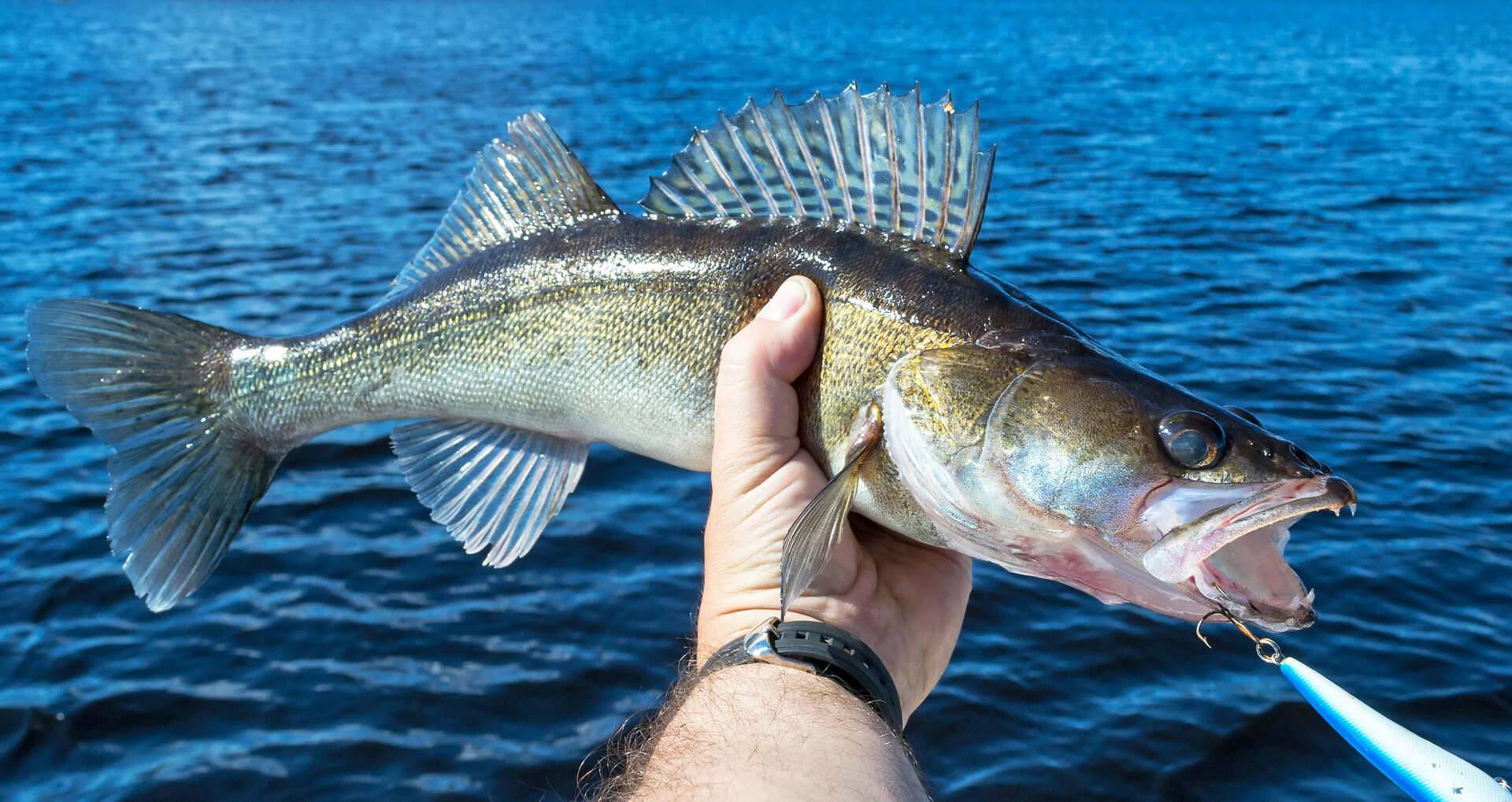Walleye Tricks and Tackle

Walleye Tricks and Tackle
Walleye, by far, has to be one of the most sought-after freshwater fish and one that every angler loves to fish fry. There are many great walleye fisheries in the State, along with two of the Nation’s biggest rivers that bookend our State, the Missouri in the west and the Mississippi in the east. We’ll take a quick look at some of the best baits to use and pair them up with the right rod and reel. We’ll also see if we can’t find a few walleye tricks and tackle that might increase your odds of success.
THE BASICS
Okay, I’ll be the first to admit that I have my confidence bait for walleye fishing. Why? Well, I’ve had a ton of success using it, but it’s also one of the basic baits and easiest presentations to use, and one that I’m sure is the first used by most walleye anglers…the jig. It’s by far the most used bait and, as previously mentioned, the first used bait. It’s easy to employ, easy to learn, and you can fish it in a variety of ways. This is an easy way to start our walleye tricks and tackle with a well known bait.
We can talk about several combinations here, but there are a few that work well and can be used across the board. First off is jig size and color. I keep a variety of colors and sizes in my jig box. Load up on an arsenal of jig heads; 1/8, 1/4, and 3/8-ounce jigs are usually what I carry in my tackle box. I keep a variety of colors but keep them basic. I also do the same with the grubs; white, black, orange/brown and chartreuse are colors that will work under most conditions. You can also tip these jigs with worms, leeches, and minnows.
THE WORM HARNESS
Another great and readily utilized technique is the worm harness. They are great for covering lots of water, and they catch fish. All you need is a few dozen nice juicy night crawlers, and you’re all set. I’d recommend using a two-hook harness rather than a three-hook. Sure, you’ll get some short strikes and will miss fish because you don’t have the third hook, but honestly, those are either smaller fish or they’re perch. There are a variety of colors, lengths, and sizes of harnesses, and you can quickly and easily get overwhelmed. As in using the jigs, keep it simple and basic.
The Slow Death Hook was a relatively new type of hook that was introduced to anglers in 2009, but since then, the Slow Death Hook method has always caught fish and is easy to employ. You can use a bottom bouncer with a five to six-foot leader.
Tie on the hook to your leader and then slide a crawler up along the entire length of the hook until you’ve passed the eye. Run the hook through the worm and then pinch it off about an inch behind it.
This unique bend allows the worm to roll slowly as you troll or drift. It’s nothing fancy, but the rig works very well. I have had great success with this rig, and I don’t add beads or blades. As anglers have become more familiar with this hook, they’ve created their own designs. Beads and blades that match the forage in the lake can increase your success.
RODS AND REELS
I like to stick to a 6-foot-8-inch rod for walleye fishing, with medium power and an extra-fast action tip. Pair these up with your favorite reel that holds about 160-200 yards of line, depending on what you decide to load on it. I usually load up 14lb fluorocarbon on my reels for walleye. It has minimal stretch, and I can feel the familiar walleye thump as the baits are sucked in and quickly set the hook with that fast action tip without ripping the fish’s lips off.
Most of the rods I own are from Scheels, and while they aren’t the cheapest ones on the market, they come with a lifetime warranty and replacement if the rod gets damaged. These are spinning reel and rod combos that work very well. Some anglers like to use a bait casting rig, but quite honestly, every rig is based on your own personal likes and dislikes, and they all catch fish.
Walleye will always be invited to my fish fry when I have a chance to invite them. Remember to practice C.P.R. (catch, photo, release) when catching these fish, especially larger breeders, and help keep the fishery viable. There are a lot of fish worth taking for the table; taking care of what we have will ensure that our kids and their kids can also enjoy the resources we share. Tight Lines, All!
By Ben Leal
Check out this article about the Walleye Challenge in Iowa
Exploring the Iowa Walleye Challenge: In Pursuit of the Prize
Also if you are looking for the digital magazine of april 2025 visit here –
or if you are interested in our cattle articles or information, check out –


